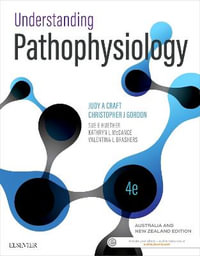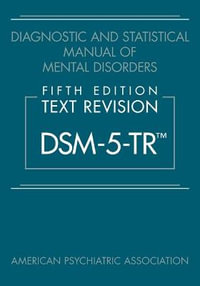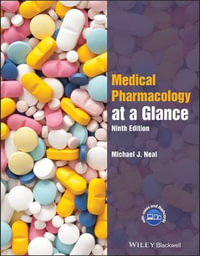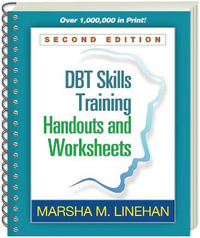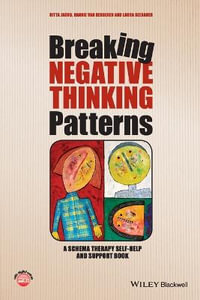
Introduction to the Masticatory System and Dental Occlusion
By: Dinesh Rokaya
Paperback | 9 December 2024
At a Glance
192 Pages
24.4 x 17.0
Paperback
$225.25
or 4 interest-free payments of $56.31 with
orAvailable: 9th December 2024
Preorder. Will ship when available.
A comprehensive introduction to the masticatory system and its relation to dental occlusion
Introduction to the Masticatory System and Dental Occlusion meets the need for a rigorous guide to the masticatory system and how it relates to dental occlusion to aid interventions. The text offers a sound understanding of functioning dental anatomy and the biomechanics that are essential to understanding dental occlusion. It covers all structures required for chewing: jaws and jaw muscles, teeth, joints, and tongue as well as other significant areas including the vascular and nervous systems that supply these structures with blood and stimulation. Beginning with the understanding of these concepts, the author provides further guidance on oral function, esthetics, and alerting patients to potential issues.
Introduction to the Masticatory System and Dental Occlusion readers will also find:
- A thorough introduction to the basic structure and function of the masticatory system
- Detailed coverage of subjects including TMJ, mastication muscles, occlusal therapy, and more
- Images to illustrate key concepts and systems
- Advice on choosing the correct medical intervention in each case
Introduction to the Masticatory System and Dental Occlusion is ideal for undergraduate and postgraduate dental students for subjects such as masticatory systems, dental anatomy, restorative dentistry, and prosthodontics, as well as for practicing dentists and medical professionals in related fields.
About the Author xiii
Foreword xiv
Foreword 2 xv
Foreword 3 xvi
Preface xvii
Acknowledgments xviii
1 Structures and Functions of Masticatory System 1
1.1 Introduction 1
1.2 Structures and Functions of Temporomandibular Joint 1
1.2.1 Articular Surfaces 1
1.2.2 Ligaments 1
1.2.2.1 Collateral (Discal) Ligaments 2
1.2.2.2 Capsular Ligament 3
1.2.2.3 Temporomandibular Ligament 3
1.2.2.4 Sphenomandibular Ligament 4
1.2.2.5 Stylomandibular Ligament 4
1.2.3 Nerve Innervation of the Temporomandibular Joint 5
1.2.4 Blood Supply of the Temporomandibular Joint 5
1.2.5 Functions of the Temporomandibular Joint 5
1.2.6 Clinical Evaluation of the Temporomandibular Joint 5
1.2.7 Radiographic Examination of the Temporomandibular Joint 5
1.2.8 Clinical Considerations of the Temporomandibular Joint 7
1.3 Structures and Functions of Masticatory Muscles 7
1.3.1 Temporalis 8
1.3.2 Masseter 11
1.3.3 Medial Pterygoid 11
1.3.4 Lateral Pterygoid 12
1.3.5 Accessory Muscles of Mastication 14
1.3.6 Clinical Considerations of the Muscles of Mastication 15
1.4 Structures and Functions of Teeth and Associated Structures 15
1.5 Biomechanical Interaction Between Masticatory Muscles and Bones 17
References 19
2 Intra-arch Tooth Alignment 22
2.1 Introduction 22
2.2 Maxillary and Mandibular Arch 22
2.2.1 Arch Form 22
2.2.2 Arch Length 24
2.2.3 Arch Width 24
2.2.4 Arch Circumference 25
2.3 Planes of Occlusion 25
2.3.1 Curve of Spee 25
2.3.2 Curve of Wilson 26
2.3.3 Sphere of Monsoon 26
2.4 Buccolingual Occlusal Contact Relationship 26
2.4.1 Bucco-occlusal Line 27
2.4.2 Linguo-occlusal Line 27
2.4.3 Central Fossa Line 27
2.5 Mesio-Distal Relationship and Buccolingual Embrasure 28
2.6 Proximal (Interproximal) and Occlusal Contacts 29
2.7 Functional Form of the Teeth at their Incisal and Occlusal Thirds 29
2.8 Inclination and Angulations of Individual Teeth 31
References 32
3 Inter-arch Tooth Alignment 36
3.1 Introduction 36
3.2 Dental Occlusion 36
3.3 Overjet and Overbite 37
3.4 Centric and Noncentric Cusps 39
3.5 Common Occlusal Relationships 40
3.5.1 Molar Classification 40
3.5.2 Canine Classification 42
3.5.3 Incisor Classification 43
3.6 Position of Mandible and Condyle 44
3.6.1 Centric Relation 44
3.6.2 Centric Occlusion 44
3.6.3 Vertical Dimension of Occlusion 45
3.6.4 Vertical Dimension of Rest 45
3.6.5 Freeway Space 45
3.7 Terminal Hinge Axis Position and Retruded Contact Position 46
3.8 Working and Nonworking (Balancing) Side 46
3.9 Tooth Guidance 47
3.9.1 Anterior or Lateral Guidance 47
3.9.1.1 Sagittal Protrusive Incisal Path Inclination 48
3.9.1.2 Lateral Incisal Path Inclination 49
3.9.2 Canine Guidance 49
3.10 Tooth Contacts 50
3.10.1 Protrusive Contacts 50
3.10.2 Retrusive Contacts 50
3.11 Occlusal Contact and Stability 51
References 52
4 Occlusal Surface of Teeth and Characteristics of Jaw Movement 54
4.1 Introduction 54
4.2 Posterior Controlling Factors (Condylar Guidance) 54
4.3 Anterior Controlling Factors (Anterior Guidance) 55
4.4 Vertical Determinants of Occlusal Morphology 56
4.4.1 Effect of Condylar Guidance on Cusp Height 56
4.4.2 Effect of Anterior Guidance on Cusp Height 56
4.4.3 Effect of Occlusion Pane on Cusp Height 56
4.4.4 Effect of Curve of Spee on Cusp Height 57
4.4.5 Effect of Mandibular Lateral Translation Movement on Cusp Height 60
4.4.5.1 Effect of the Amount of Lateral Translation Movement on Cusp Height 61
4.4.5.2 Effect of the Direction of the Lateral Translation Movement on Cusp Height 61
4.4.5.3 Effect of the Timing of the Lateral Translation Movement on Cusp Height 63
4.5 Horizontal Determinants of Occlusal Morphology 63
4.5.1 Effect of Distance from the Condyle on Ridge and Groove Direction 65
4.5.2 Effect of Distance from the Midsagittal Plane on Ridge and Groove Direction 65
4.6 Relationship Between Anterior and Posterior Controlling Factors 66
References 66
5 Mandibular Movements 68
5.1 Introduction 68
5.2 Mandibular Movements 68
5.2.1 Rotational Movements 70
5.2.1.1 Horizontal Axis of Rotation 70
5.2.1.2 Vertical Axis of Rotation 71
5.2.1.3 Sagittal Axis of Rotation 72
5.2.2 Translational Movements 72
5.2.2.1 Range of Movements 73
5.3 Single Plane Border Movements 73
5.3.1 Sagittal Plane Border and Functional Movements 73
5.3.1.1 Posterior Opening Border Movements 73
5.3.1.2 Anterior Opening Border Movements 74
5.3.1.3 Superior Contact Border Movements 74
5.3.1.4 Functional Movements 76
5.3.2 Horizontal Plane Border and Functional Movements 77
5.3.2.1 Right Lateral Border Movements 77
5.3.2.2 Continued Right Lateral Border Movements with Protrusion 77
5.3.2.3 Left Lateral Border Movements 77
5.3.2.4 Continued Left Lateral Border Movements with Protrusion 79
5.3.2.5 Functional Movements 79
5.3.3 Vertical Plane Border Movements and Functional Movements 79
5.3.3.1 Right Lateral Superior Border Movements 79
5.3.3.2 Right Lateral Opening Border Movements 80
5.3.3.3 Left Lateral Superior Border Movements 80
5.3.3.4 Left Lateral Opening Border Movements 80
5.3.3.5 Functional Movements 80
5.4 Envelope of Motion 80
5.5 Mandibular Movements in Diseases and Defects 82
References 85
6 Mastication, Swallowing, and Speech 87
6.1 Introduction 87
6.2 Mastication 87
6.2.1 Masticatory Mechanism and Chewing Stroke 88
6.2.2 Incision of Food 88
6.2.3 Crushing and Grinding of Food 88
6.2.4 Masticatory Cycle 88
6.2.4.1 Phase 1: Opening 89
6.2.4.2 Phase 2: Closing 90
6.2.4.3 Phase 3: Occlusion 90
6.2.4.4 Phase 4: Exit 91
6.2.5 Mandibular Movements During Crushing and Grinding 91
6.2.6 Chewing Side Preference 93
6.2.7 Contacts of Tooth During Mastication 93
6.2.8 Mastication Force 93
6.3 Swallowing 94
6.3.1 First Stage 96
6.3.2 Second Stage 98
6.3.3 Third Stage 98
6.3.4 Swallowing Frequency 100
6.3.5 Teeth Contact During Swallowing 101
6.4 Speech 101
References 103
7 Nervous System Regulating the Masticatory System 107
7.1 Introduction 107
7.2 Anatomy and Function of the Neuromuscular System 107
7.2.1 Neurologic Structures 107
7.2.1.1 The Neuron 107
7.2.1.2 Sensory Receptors 108
7.2.1.3 Brainstem and Brain 109
7.2.1.4 Spinal Tract Nucleus 109
7.2.1.5 Reticular Formation 109
7.2.1.6 Thalamus 109
7.2.1.7 Hypothalamus 109
7.2.1.8 Limbic Structures 110
7.2.1.9 Cortex 110
7.2.2 Muscles 110
7.2.2.1 Motor Unit 110
7.2.2.2 Muscle Function 110
7.2.2.3 Muscle Sensory Receptors 112
7.2.2.4 Muscle Spindles 112
7.2.2.5 Golgi Tendon Organs 113
7.2.2.6 Pacinian Corpuscles 113
7.2.2.7 Nociceptors 113
7.3 Neuromuscular Function 113
7.3.1 Function of the Sensory Receptors 113
7.3.2 Reflex Action 114
7.3.3 Nociceptive (Flexor) Reflex 114
7.3.4 Myotatic (Stretch) Reflex 115
7.3.5 Reciprocal Innervation 115
7.4 Aging of the Neuromuscular System and Performance 116
References 118
8 Bruxism and Clenching 121
8.1 Introduction 121
8.2 Bruxism 121
8.2.1 Types of Bruxism 121
8.2.2 Causes and Risk Factors 121
8.2.3 Pathophysiology 122
8.2.4 Clinical Features 124
8.2.5 Management 125
8.3 Clenching 129
8.3.1 Clinical Features 129
References 130
9 Aging-Related Changes of Masticatory System 133
9.1 Introduction 133
9.2 Effect of Aging on Mastication 135
9.2.1 Dentation 135
9.2.2 Salivation 136
9.3 Effect of Aging on Masticatory Muscles 137
9.4 Effect of Aging on Swallowing 138
9.5 Effect of Aging on Temporomandibular Joint 138
9.6 Effect of Aging on the Muscles and Nerves 139
References 140
10 Occlusal Concept and Its Application in Various Fields 144
10.1 Introduction 144
10.2 Articulators 144
10.3 Occlusal Concept Application Restorative Dentistry 148
10.3.1 Treatment Goals for Tooth Contacts 148
10.3.2 Treatment Goals for the Mandibular Position 148
10.4 Occlusal Concept Application in Fixed Prosthodontics 149
10.4.1 Treatment Goals for Tooth Contacts 149
10.4.2 Treatment Goals for the Mandibular Position 150
10.5 Occlusal Concept Application in Implant Dentistry 151
10.6 Occlusal Concept Application in Periodontics 151
10.7 Occlusal Analysis and Adjustments 153
References 156
11 Problems in Occlusion 159
11.1 Introduction 159
11.2 Complete Dentistry 159
11.3 Treatment of Occlusal Problems 160
11.3.1 Accomplishing Treatment Goals in Operative Dentistry 160
11.3.1.1 Contacts in Anterior Teeth 160
11.3.1.2 Contacts in Posterior Teeth 160
11.3.2 Accomplishing Treatment Goals in Fixed Prosthodontics 162
11.3.2.1 Contacts in Anterior Teeth 162
11.3.2.2 Contacts in Posterior Teeth 162
11.3.3 Selective Grinding 162
References 169
Index 171
ISBN: 9781119884187
ISBN-10: 1119884187
Available: 9th December 2024
Format: Paperback
Language: English
Number of Pages: 192
Audience: Professional and Scholarly
Publisher: John Wiley & Sons (UK)
Country of Publication: US
Dimensions (cm): 24.4 x 17.0
Shipping
| Standard Shipping | Express Shipping | |
|---|---|---|
| Metro postcodes: | $9.99 | $14.95 |
| Regional postcodes: | $9.99 | $14.95 |
| Rural postcodes: | $9.99 | $14.95 |
How to return your order
At Booktopia, we offer hassle-free returns in accordance with our returns policy. If you wish to return an item, please get in touch with Booktopia Customer Care.
Additional postage charges may be applicable.
Defective items
If there is a problem with any of the items received for your order then the Booktopia Customer Care team is ready to assist you.
For more info please visit our Help Centre.
You Can Find This Book In

When A Loved One Won't Seek Mental Health Treatment
How to Promote Recovery and Reclaim Your Family's Well-Being
Paperback
RRP $42.99
$21.25
OFF

BLACK FRIDAY
RRP $24.99
$19.50
OFF

Australia and New Zealand McKenna's Drug Handbook for Nursing and Midwifery
Australia and New Zealand 9th edition
Paperback
RRP $87.95
$74.75
OFF

Trauma-Focused ACT
A Practitioner's Guide to Working with Mind, Body, and Emotion Using Acceptance and Commitment Therapy
Paperback
RRP $113.95
$71.90
OFF

The Mindful Self-Compassion Workbook
A Proven Way to Accept Yourself, Build Inner Strength, and Thrive
Paperback
RRP $59.99
$42.25
OFF

Polyvagal Flip Chart
Understanding the Science of Safety (Norton Series on Interpersonal Neurobiology)
Paperback
RRP $57.95
$38.50
OFF



